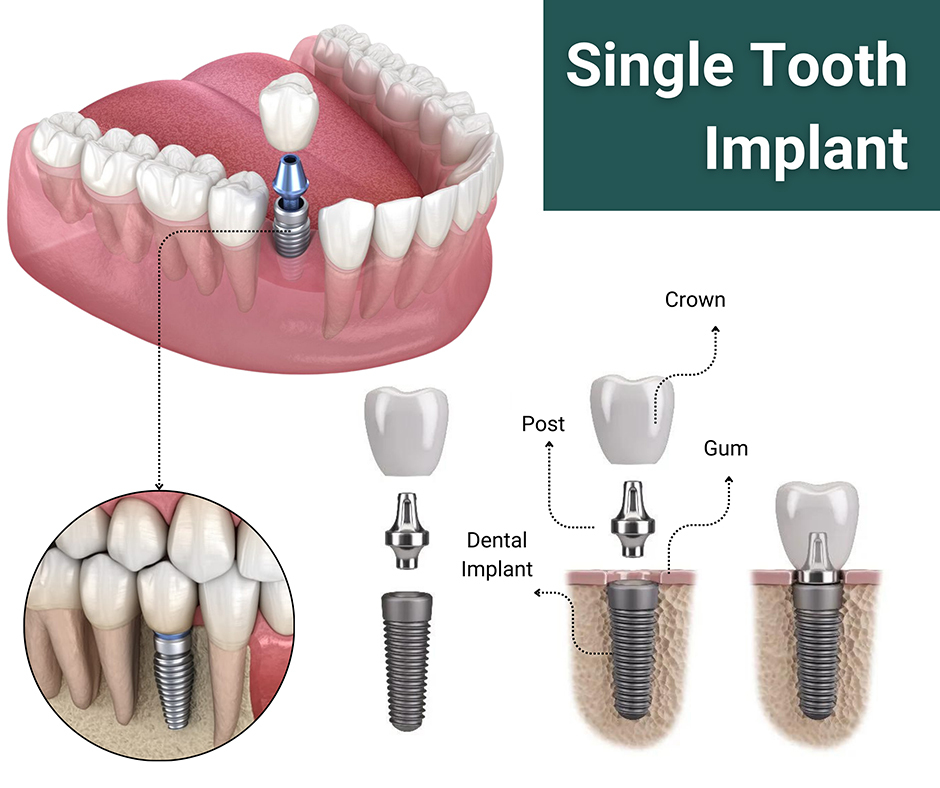Some Known Details About Dental Implants
Some Known Details About Dental Implants
Blog Article
Some Known Facts About Dental Implants.
Table of ContentsDental Implants Things To Know Before You Get ThisDental Implants Fundamentals ExplainedDental Implants for BeginnersSome Ideas on Dental Implants You Should Know
are medical devices operatively implanted right into the jaw to bring back an individual's capacity to eat or their appearance. They provide assistance for artificial (fake) teeth, such as crowns, bridges, or dentures. When a tooth is shed due to injury or condition, an individual can experience complications such as fast bone loss, faulty speech, or modifications to chewing patterns that cause discomfort.
Framework of The Oral Implant System picking oral implants, speak to your dental copyright concerning the prospective advantages and threats, and whether you are a candidate for the treatment. Points to take into consideration: Your general wellness is an essential consider figuring out whether you are a great candidate for dental implants, just how long it will certainly take to recover, and how much time the dental implant may stay in location.
Smoking may affect the recovery procedure and reduce the lasting success of the implant. The recovery procedure for the implant body may take a number of months or longer, during which time you usually have a temporary abutment instead of the tooth. the oral implant treatment: Carefully follow the oral hygiene instructions offered to you by your dental service provider.
Dental Implants Things To Know Before You Buy
Implant failure can lead to the requirement for another surgery to deal with or replace the implant system. Restores the capacity to eat Recovers aesthetic look Helps keep the jawbone from diminishing because of bone loss Maintains the wellness of the surrounding bone and gums Helps keep adjacent (nearby) teeth secure Boosts lifestyle Damages to bordering natural teeth throughout implant placement Injury to the surrounding cells during surgical procedure, such as sinus perforation Injury during surgery (as an example, fracture of surrounding jawbone) Insufficient feature, such as seeming like the teeth do not bite with each other normally A feeling that the tooth hangs or turning in position arising from a joint screw loosening up Implant body failing (looseness of the implant body) because of systemic infection, which might be more probable in individuals with unchecked diabetes mellitus due to local infection in bone and gum tissues supporting the dental implant body because of delayed recovery, which might be more probable in individuals that smoke Trouble cleaning the gums click here for more around the dental implant, leading to inadequate oral hygiene Untreated gum disease Post-surgical tingling as a result of nerve impingement or damage Constantly inform healthcare providers and imaging technicians that you have dental implants prior to any type of magnetic resonance imaging (MRI) or x-ray procedures.
FDA is not knowledgeable about any kind of damaging events reported for MRI or x-ray treatments with dental implants. Dental implants systems are generally constructed from products that comply with international consensus criteria of the International Organization for Standardization (ISO) or ASTM International. These requirements have about his information of what makes a safe material.
Other products such as gold alloys, cobalt-based alloys, titanium alloys, or ceramic materials are often used. The safety and security profiles of these materials are widely known. Dental dental implant systems are reviewed according to international agreement standards. Biocompatibility testing, to show that bodily contact with the gadget does not trigger difficulties like irritation or allergy, belongs to the assessment that assists make certain the materials in the dental implant system are risk-free and do not trigger adverse impacts when dental implanted in individuals.

Some Of Dental Implants
Some individuals are not qualified for oral implant surgical procedure. It is for oral surgeons to operate on people with: acute illnessuncontrollable metabolic diseasebone or soft cells condition or infectionIf these concerns are settled, a person can have the surgery. Dental Implants. In, oral doctors avoid running on individuals with: If people with any of the above undertake oral implant surgical procedure, there is a greater danger of the implant stopping working
Some people have a jawbone irregularity that a knockout post avoids enough bone for a dental implant from creating. In such situations, a cosmetic surgeon may require to do a ridge adjustment. This involves lifting the gum tissue to reveal the location of warped bone. The specialist will certainly after that make use of a bone or bone replacement to fix and construct up the location.
Oral implant surgical procedure is a tailored process. It's not the very same for every person. Yet the complying with provides a basic review of what you can anticipate your dental expert, oral surgeon, periodontist or prosthodontist to do: Put the dental implant surgically. Offer you time to recover. Attach the article and final crown, bridge or denture.
Next off, your surgeon will very carefully position the oral implant right into your jaw. If your dental implant is near the front of your mouth, your dental practitioner will make a short-term tooth for you to use till you recover.
An Unbiased View of Dental Implants
Your provider can inform you what to anticipate in your scenario. Throughout the healing phase, your jawbone needs to fuse to the oral implant. This procedure, called osseointegration, is essential for security and long-lasting success. This process can take anywhere from 3 to 9 months. In some situations, it may take longer.
Once your implant heals, your dental professional can connect the joint (small connector blog post) and your last restoration (crown, bridge or denture). This usually takes concerning one hour to finish and might require a 2nd small surgical procedure. You shouldn't feel any kind of pain throughout your oral implant treatment due to the fact that your service provider will use medication to numb your gums.
Report this page